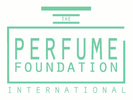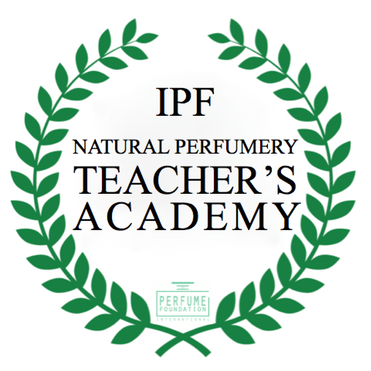|
By Françoise Rapp, Certified Master Perfumer Perfumery has been an integral part of human life for centuries, with the use of natural fragrances dating back to ancient civilizations. One of the key ingredients in any heritage perfume is Musk, which has a rich history worldwide. Musk is a complex and intriguing aroma that adds depth and complexity to fragrances, but it has also been controversial due to its animal origins. In this article, we look closer at the different types of Musk used in the perfumery industry and how it has been adapted to natural perfumery while keeping the ethical concerns surrounding their use. A brief history of Musk The use of Musk in perfumery dates to ancient times, with the ancient Egyptians and Romans using Musk in their perfumes. Musk was considered a luxury item and often used in religious ceremonies. The Musk used in ancient times came from the musk deer, a small deer found in Asia. The musk deer produces a glandular secretion with a strong, musky odor, collected. Sometimes part in rituals to ward off negative vibrations or as a medical remedy, Musk has crossed civilizations and borders. If its use varied from one culture to another, all recognized the aphrodisiac virtues of Musk. This property originates in the animal world: during the rutting period, the musk horse secretes an odorous liquid that bewitches females. By the 6th century, Musk was discovered by Greek explorers, making its way across India into the Arabic regions. From this time, Musk's power and popularity took off, turning into everything from perfumes to pomander balls to ward off smells and disease. From the 8th to the 13th century, animal musk was a must to perfume clothes and interiors. However, it was in the 12th century that this substance arrived in Western Europe. By the 15th century, the musk trade peaked, and Islamic culture and regional rituals used it to represent the smell of heaven. In the 19th century, Musk became even more popular in the perfumery industry, and the demand for Musk led to the overhunting of musk deer. It led to a decline in the musk deer population and made Musk expensive and rare. As a result, the perfumery industry began to look for alternative sources of Musk, like synthetic Musk. Still nowadays, however. The appeal of Musk's warm, sensual scent reached its peak in the 1960s and 1970s, and it has now become an essential component in perfumery and cosmetics. Musk and Animal Cruelty The use of Musk from the musk deer has been controversial due to the harm caused to the animals. Harvesting Musk from the musk deer requires killing the animal, leading to the overhunting of the musk deer and a decline in their population. In addition, the musk deer is a protected species, and the harvesting of Musk is illegal in many countries. While natural Musk from the musk deer has decreased, some perfumers still use it in their perfumes. Since the growing era of synthetics, Musk has been king and still nowadays. Perfumers add Musk to their formula to add a long-lasting effect and a soft sensual facet to their scent. Conventional perfumery uses synthetics Musk for those reasons and the cost efficiency of formulas. Besides the impact on our health and the olfactory flatness of the synthetic component, it contributes to making conventional perfumes smell the same. Musk becomes a joker card for traditional perfumers who overuse it, often forgetting or not knowing that natural musky notes can be more flattering for the senses than they imagine. However, there has been a growing trend toward using Musk from plant sources in natural perfumery, and it is so much more interesting in terms of olfactory quality! The Use of Musk from Plant Sources in Natural Perfumery
Musk from plant sources has become increasingly popular in natural perfumery. Musk's most common plant source is the ambrette seed, which has a sweet musky aroma; it is called the seeds of Musk. However, it is possible to use other plant sources to build musk accords and provide the same olfactory enchantment and perfume-lasting quality. Plant-based Musk has a different aroma than animal-based Musk but still adds depth and complexity to perfumes. The olfactory specifics of botanical musk depend on the source of the Musk. For example, when ambrette seed musk has a sweet and musky aroma, angelica root has a spicy facet. Plant-based Musk is often combined with other natural perfume ingredients to create unique and complex accords. What does botanical musk accord bring to a natural perfume? Using plant-based Musk in natural perfumery has opened a new world of possibilities for perfumers, allowing them to create unique and sustainable fragrances. It ignites the perfumer's creativity and adds another dimension to a natural perfumed composition. Moreover, it is a source of inspiration for noses. In a natural perfume, musk accord brings a feeling of softness and comfort, a deep, reassuring sensation. This olfactory family is addictive and comforting: people who wear a perfume containing Musk feel a sense of serenity as if they were in a cocoon. A long-lasting trail: in the composition of a perfume, the molecules contained in botanical musk accord play the role of fixers, which makes it possible to prolong the "sillage" of scents. The musky notes become binders between the various elements of the agreement and bring roundness and sensuality. Popular in women's and mixed fragrances, we can use Musk in the base notes of compositions for those properties and its delightful character. How to Compose Botanical Musk Composing botanical musk requires a deep understanding of the different plant sources of Musk and their olfactory components. Perfumers must also have a keen sense of the other natural ingredients used in perfumes and how they interact with each other. One way to learn how to compose botanical musk is through a masterclass. A masterclass is a great way to gain valuable knowledge and mastery from an experienced perfumer. In a masterclass, participants learn about the different plant sources of Musk, their olfactory properties, and how to combine them with other natural ingredients to create unique and complex accords and natural fragrances. Creating your signature musk accord is a must for a natural perfumer and a secret formulation that make your natural fragrances outstanding while being sustainable and from plant sources. If you're interested in learning how to compose botanical musk and want to take your natural perfumery skills to the next level, then a masterclass is the perfect way. Stay tuned for more information about our upcoming masterclass, where you'll learn from experienced perfumers and gain hands-on experience in creating natural perfumes. By learning how to use plant-based Musk in perfumes, you'll be able to create unique and complex fragrances that are both sustainable and ethical. So, join us for our upcoming masterclass on June 5 and take your natural perfumery skills to the next level! Botanical Musk Accords Master Class
1 Comment
|
Archives
June 2024
Categories
All
|
- HOME
- ABOUT
- IPF CERTIFICATION
-
COURSES
-
MASTER CLASSES
- Teaching Methodology
- Natural Raw Material Extraction Methods >
- Natural Candle Making
- Healing Gardening
- Sustainable Oud MasterClass
- World Perfume History Master Class
- Scent Design and Formula Building >
- Fragrant Botany & Chemistry >
- Perfume Design, Concept and Storytelling
- French Natural Aromachology #1
- French Natural Aromachology #2
- Olfaction Training for Children
- Accords - Chypre
- Accords - White Florals 1
- Accords - Fougeres and Aromatics
- FRAGRANCE DEVELOPMENT
- SPEAKERS
- EXHIBITIONS
- Partners
- Blog
- Contact




 RSS Feed
RSS Feed
